Every month, except over Christmas and during the summer holidays, we hold a Japanese tea ceremony demonstration in the traditional Japanese tea house in the Museum’s Japanese galleries. The tea house was designed and built especially for the Ashmolean by a team of highly skilled Japanese craftsmen, led by the master carpenter Mr Eichirō Amakasu and the architect Mr Isao Komoda. We have always been very keen to make it an active tea house, rather than just another exhibit, and we are fortunate enough to have the support of a wonderful team of Japanese tea enthusiasts who are prepared to give their time and expertise so that we can run regular demonstrations.
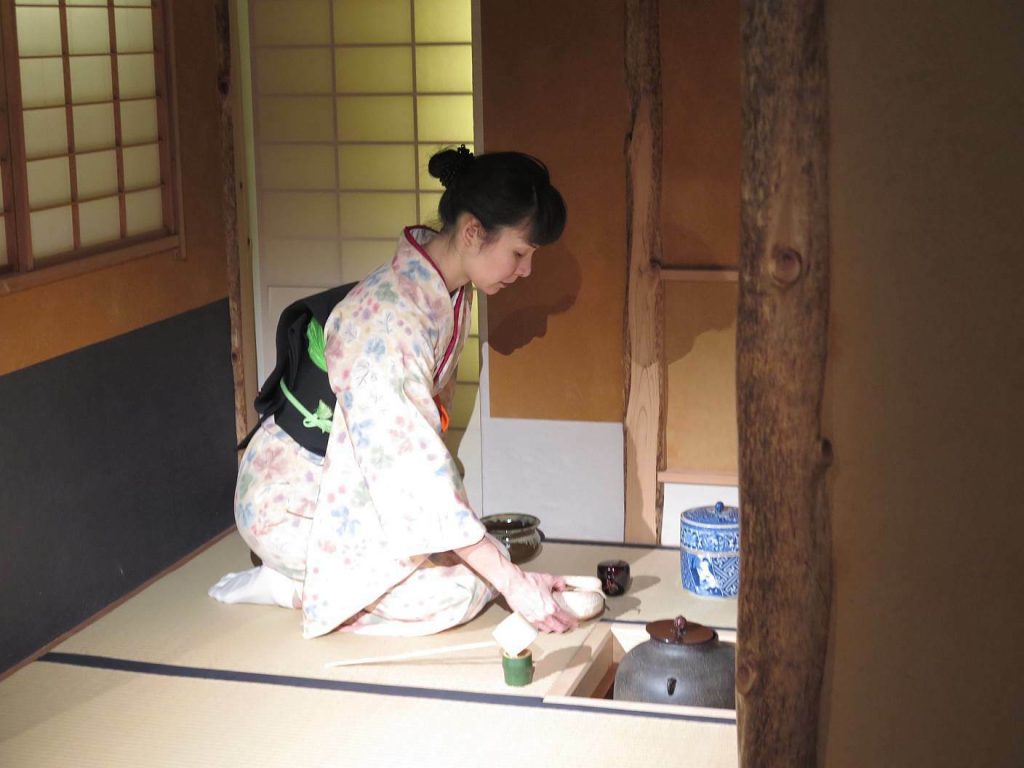
To give you an idea of what happens in one of our demonstrations, here is a diary of a typical ‘Tea Demo Day’.
15 June 2017
Night before. Remember to get matcha powdered green tea out of the freezer. We stock up with really good matcha in London or – even better – in Japan, and it keeps surprisingly well in the freezer. Otherwise the startling green tea with its distinctive aroma oxidises to a slightly dingy khaki colour. I just have to remember to take it out well in advance so that it isn’t too cold and damp on the day.
8.30 am. I pop into the garden to see what flowers I can find to arrange in the display alcove of the tea house. One of the key ideas behind the Japanese tea ceremony is wabi, the notion of finding beauty in the humble, the simple and the imperfect. Everything used in a tea gathering is carefully selected to express this mood, even the flowers. So it’s important not to choose anything too flashy or scented. At this time of year Japanese anemones work well; perhaps cherry blossom in the spring, or delicate acer leaves in the autumn. I know that one of our volunteers, Masayo-san, will bring something in too – she has a garden full of lovely Japanese plants. I find some pretty white astrantia that should look good against the ochre-coloured walls of the tea house – fingers crossed it will survive the bike ride into the Ashmolean.
9.00 am. Before the museum opens to the public I give the tea house a quick clean. It’s remarkable how dusty it gets! I keep a set of special dusters and brushes and cloths that are used only for this purpose and a gentle dusting of the surfaces and wipe-down of the tatami floor with a damp cloth is all that’s needed. I like to feel there is something a little Zen-like about this task. It’s really very peaceful inside the tea house, with a faint smell of wood and tatami straw matting.
9.30 am. I get hold of the list of attendees from colleagues in the Education Department, which oversees the event. We limit numbers to make sure that all our guests can get a really good view of the tea house, and the demonstrations are almost always fully booked.
10.00 am. I set to work on creating handouts for the event, as we like to give visitors a brief record of our tea gathering to take away with them. Traditionally, tea hosts and guests in Japan would keep records of the tea gatherings they attended, carefully noting details of the event, such as the utensils selected, flowers arranged and guests invited. Through the careful selection of these different elements, a tea host can demonstrate his or her taste and create a particular mood, depending on the season, the time of day and the atmosphere they want to create. There is a lovely Zen phrase used in tea circles, ichigo ichie (一期一会), literally ‘one time, one meeting’, that expresses how each tea gathering is a unique occasion, a one-off, transient moment to be treasured. Our handouts are inspired by these tea diaries and list all the utensils we have selected for each demonstration. Like the historical tea masters, we make sure to update the list for each demonstration.
10.30 am. Our demonstrators start to arrive to get ready for the day. Every month I am impressed by their knowledge, dedication, kindness and adaptability. There are many challenges to making tea in a museum setting and the team members are unfailingly positive in the face of all of them. They are often joined by other fantastic helpers from the University Museum Volunteer Service, who provide invaluable assistance with setting up and serving tea, and generally making sure the day goes smoothly.
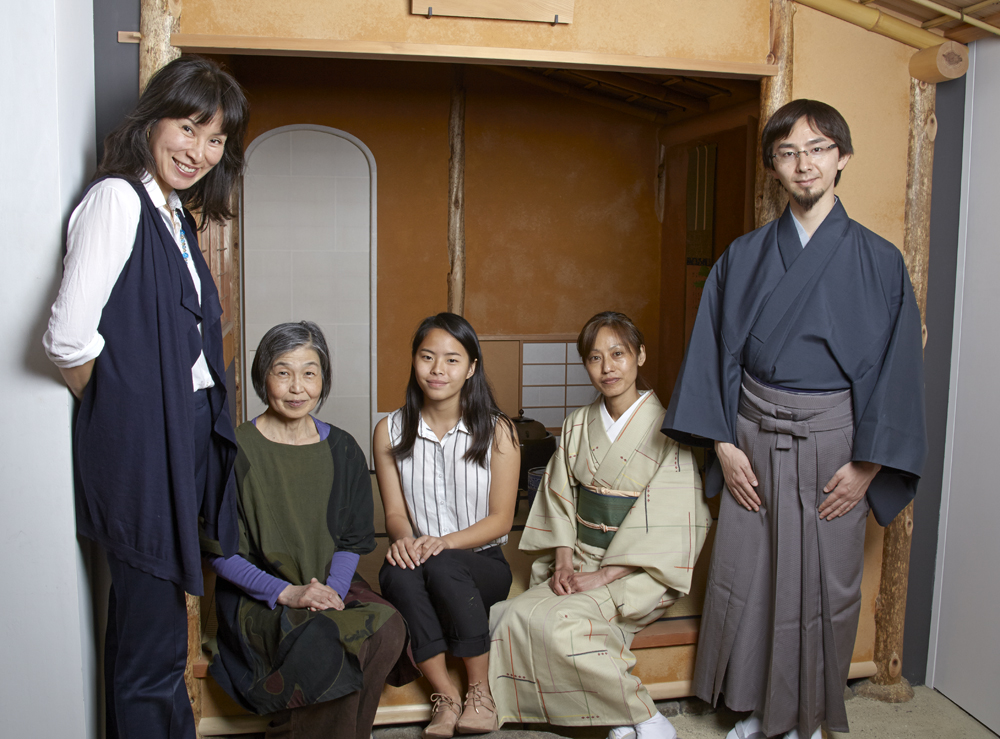
Masayo-san arrives first, with an armful of beautiful seasonal flowers from her garden. She disappears upstairs to arrange them in the hanging vase in the tea house. Tea flowers are very informally arranged, to look as if they have been simply ‘thrown into’ the vase.
11.00 am. Meanwhile, Satomi-san starts to rinse the metal kettle used to heat the water for the tea and boils mineral water (instead of hard Oxford tap water!) to fill thermos flasks ready to use later.
Midday. Miyuki-san arrives. Another key member of our team, she is our kimono expert. Putting on a kimono is a complex process and many Japanese women are not able to dress themselves completely alone. The tying of the obi sash is particularly tricky. For the next hour, my office becomes a changing room.
Mitsuko-san starts carrying tea bowls and other equipment up to the Japanese galleries, where front-of-house colleagues have set up a table and stools for us. A proper tea room would have its own preparation area, like a small kitchen, but we make a temporary preparation area in the gallery next to the tea house.
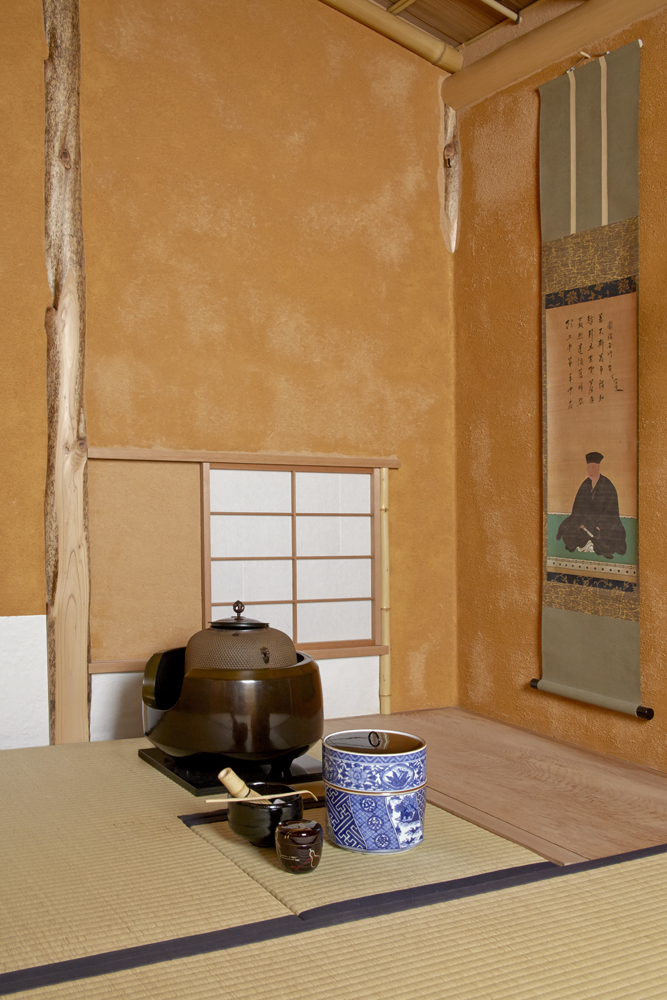
Meanwhile, someone sieves the tea to get rid of any lumps, then piles it carefully into the lacquer tea container. The tea is supposed to be piled up like an elegant mountain inside the container, and there is even a special word for how it looks – keshiki, or ‘landscape’. Someone else selects the sweets to be used; as the tea is quite bitter, a sweet is always eaten before the tea is drunk. The sweets are often designed to reflect the season, so might be moulded in the shape of autumn maple leaves, winter snowflakes or spring blossoms. Today’s sweets are in the shape of green leaves and rippling water.
1.00 pm. The guests assemble at the tea house and we head off to one of the Eastern Art Department study rooms so that I can give a brief introductory talk: about the history of tea drinking in Japan, the notion of wabi that informs the tea ceremony, and what happens in a real tea gathering. We also handle some tea wares from the Ashmolean’s collection.
We head back to the gallery, where stools have been set up in front of the tea house. We ask one visitor to volunteer to be a guest inside the tea house (somebody who is happy to kneel for a while). Other visitors sit on the stools to watch the demonstration, but everyone receives a bowl of tea – if not made inside the teahouse then in the nearby preparation area.
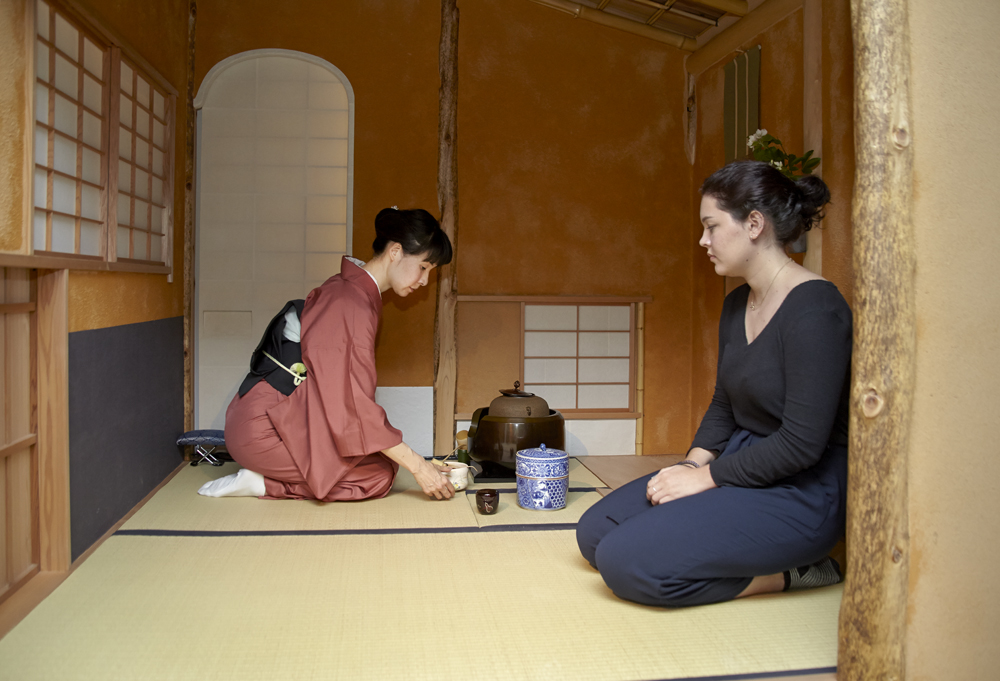
At its core, the tea gathering is an act of hospitality, a way of leaving the stresses and chaos of everyday life behind for a while to enjoy a delicious bowl of tea in good company in the tranquil surroundings of the tea house. A full tea gathering can last several hours and includes a meal and two different types of tea. We can’t attempt to recreate a ‘proper’ tea ceremony at the Ashmolean, but we can certainly offer hospitality to our visitors through carefully prepared bowls of tea.
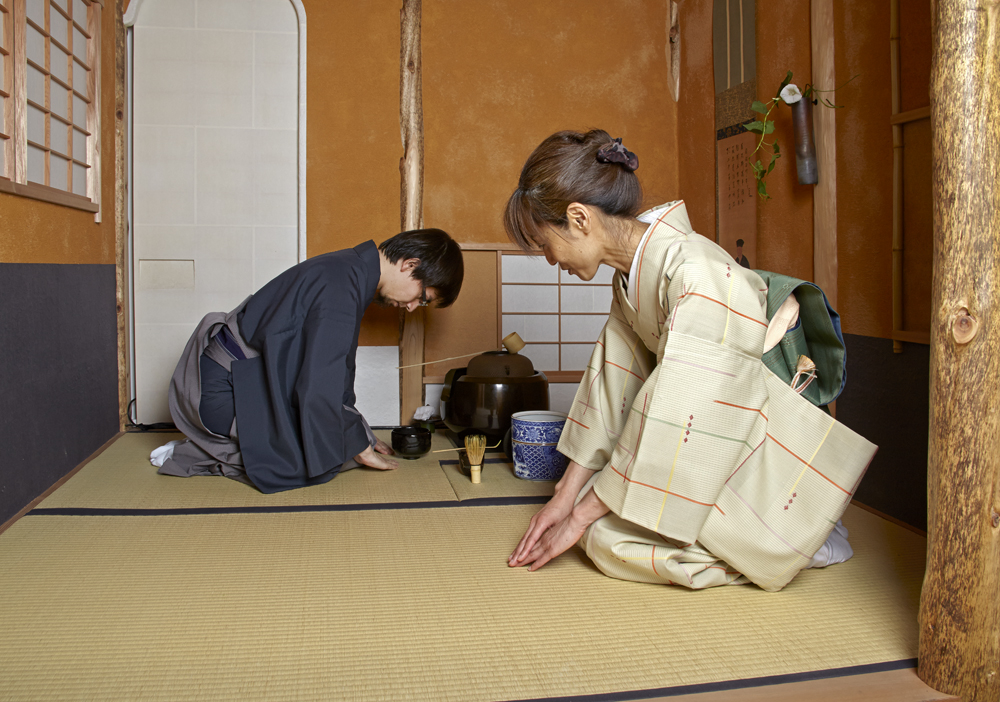
There is no chatting during a tea ceremony, with just a few set phrases exchanged between guest and host. The focus is entirely on the preparation and drinking of the tea within the tea house, so chitchat isn’t encouraged. Yet there is by no means complete silence; instead there is a kind of gentle background music made by the water bubbling in the kettle and being poured from the ladle, the tapping of the tea scoop on the side of the bowl, and the whisking of the tea. I always keep my fingers crossed that that there is not too much noise in the surrounding galleries to drown out these subtle sounds.
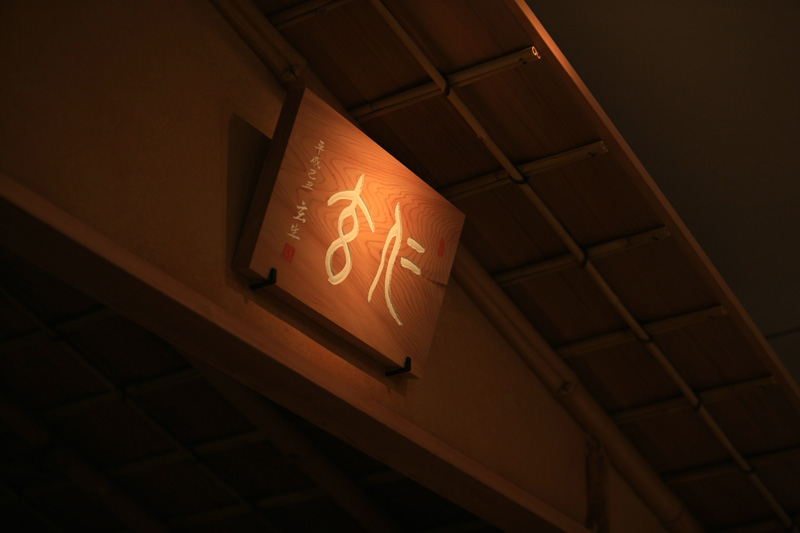
© Mr and Mrs H Shikanai
The name Ningendō was given to the teahouse by the gallery’s sponsors, Mr and Mrs Hiroaki Shikanai, who kindly introduced us to the craftsmen who made the teahouse. The character nin 仁 means humanity or benevolence; gen 玄 means mystery and dō 堂 means house or hall. The phrase, which is taken from the writings of the ninth century Buddhist Monk Kūkai, is hard to translate, but can be interpreted to describe the way that within the teahouse human existence, in all its insignificance, is united with the vastness of the universe. Mr Shikanai did the calligraphy for the plaque, choosing the archaic form of calligraphy known as tensho, or Chinese seal script. This was then intricately carved onto a beautiful wooden panel chosen for its distinctive woodgrain with the appearance of rippling water.
After the demonstration, we try to answer any questions our visitors may have. Every group responds slightly differently to the demonstrations and I am struck by how each tea gathering really is a unique experience. We invite anyone who is interested to step inside the tea house. Ningendō, at just under 2m2 with one and three quarter tatami floor mats, is the smallest standard-size tea house. Although it looks tiny from the outside, it feels surprisingly spacious when you’re sitting inside. It’s made entirely from traditional Japanese materials – cedar, cryptomeria, pine, and bamboo – with roughly plastered walls and paper lattice windows that allow light to filter softly into the room. The timber framework was first constructed at master carpenter Amakasu-san’s workshop near Tokyo, then taken apart and shipped to England, where it was painstakingly reconstructed inside the Japanese gallery by a team of specialist craftsmen. Amakasu-san and his assistant carpenter were joined by a master plasterer who used plaster made from special river and mountain sand to achieve an undulating surface of bright ochre colour. And a master paperer pasted hand-made Japanese paper onto the walls – white for the host and deep blue for the guests.
Each area within the tea house has a particular function. There is an area for the display of a scroll and flowers, an arched doorway at the back for the host, and a small door at the side for guests. This guest door (nijiriguchi) is traditionally built very low, so that all guests, whatever their social standing, are forced to bow down to enter the room. There is also a hearth for the kettle that heats the water for the tea. This would normally be laid with a charcoal fire, but for obvious reasons we use an electric heater instead. A real tea house would be located within a tea garden that allows guests physically to separate themselves from the outside world as they enter the world of tea. Of course we can’t provide a garden, but the teahouse is separated from the gallery by a tiny strip of beaten earth, and entered by stepping up onto a large stone sourced from North Wales. And it really does feel like a different world inside.
